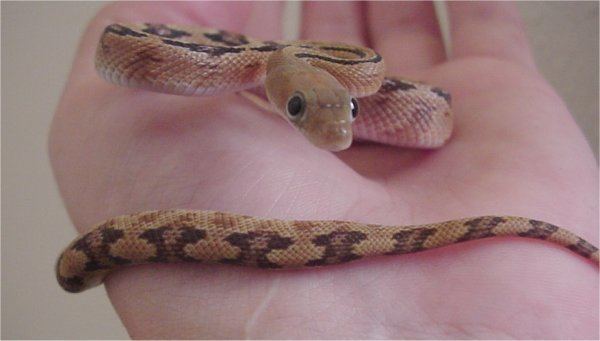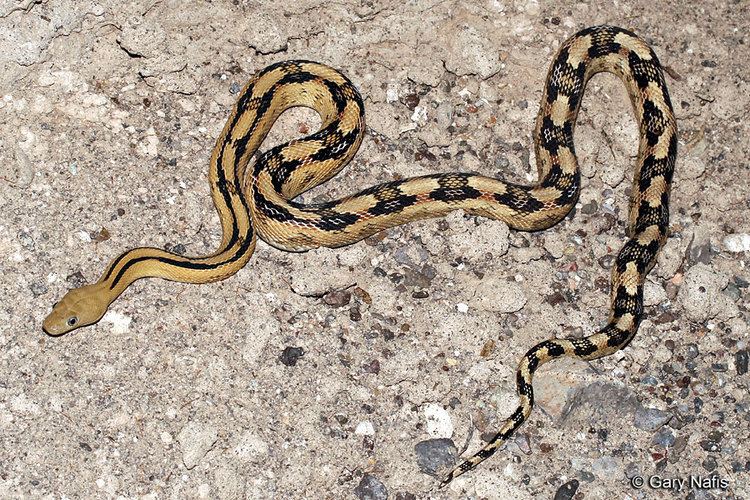Suborder Serpentes Subfamily Colubrinae Higher classification Bogertophis Order Scaled reptiles | Subphylum Vertebrata Genus Bogertophis Phylum Chordata Rank Species | |
 | ||
Similar Bogertophis, Snake, Reptile, Colubridae, Pantherophis bairdi | ||
Trans pecos rat snake
Bogertophis subocularis, commonly known as the Trans-Pecos rat snake or the Davis Mountain rat snake, is a species of medium to large, nonvenomous rat snake in the family Colubridae. Bogertophis subocularis is endemic to the Chihuahuan Desert.
Contents

Geographic range

The Trans-Pecos rat snake is found in the Mexican state of Coahuila, and its range extends northward into Texas and New Mexico in the United States.
Description

B. subocularis has a row of small scales (suboculars) between the lower border of the eye and the upper labials. This beautiful snake is yellow to tan dorsally with a series of black, or dark brown, H-shaped markings. The eyes are large and prominent, light-colored with contrasting round black pupils. The tongue is pink. Dorsal scales in 31-35 rows. Ventrals 260-277; subcaudals 69-79.
Habitat

The Trans-Pecos rat snake's habitat consists of desert flats and brushy slopes, and rocky outcrops where they nest and feed on small vertebrates.
Behavior
A nocturnal species, it is uncommon and rarely seen in the wild, save on warm summer nights during the breeding season. Nicknamed "subocs" by enthusiasts, they are unaggressive when approached, even passive, and are easily raised in captivity.
Size
Females are larger than males as adults. Adult males reach between 3.5 and 4.5 feet (1.1-1.4 m) in total length (including tail); whereas females grow up to 5.5 feet (1.7 m).
Reproduction
The breeding season for B. subocularis runs through May and June, while egg-laying begins in July and ends by September. At nearly three months, their incubation period is lengthy for a snake, at the end of which a clutch of anywhere from three to 11 snakes, each 28–33 cm (11–13 in) in total length, hatch. As they are born during winter, the hatchlings may remain hidden underground for several months before venturing outside.
